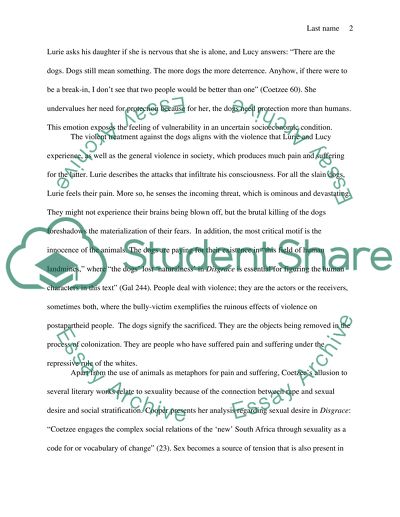Cite this document
(“Sexuality and Animals in Coetzee's Disgrace Essay - 1”, n.d.)
Sexuality and Animals in Coetzee's Disgrace Essay - 1. Retrieved from https://studentshare.org/literature/1401851-argument-essay
Sexuality and Animals in Coetzee's Disgrace Essay - 1. Retrieved from https://studentshare.org/literature/1401851-argument-essay
(Sexuality and Animals in Coetzee'S Disgrace Essay - 1)
Sexuality and Animals in Coetzee'S Disgrace Essay - 1. https://studentshare.org/literature/1401851-argument-essay.
Sexuality and Animals in Coetzee'S Disgrace Essay - 1. https://studentshare.org/literature/1401851-argument-essay.
“Sexuality and Animals in Coetzee'S Disgrace Essay - 1”, n.d. https://studentshare.org/literature/1401851-argument-essay.


